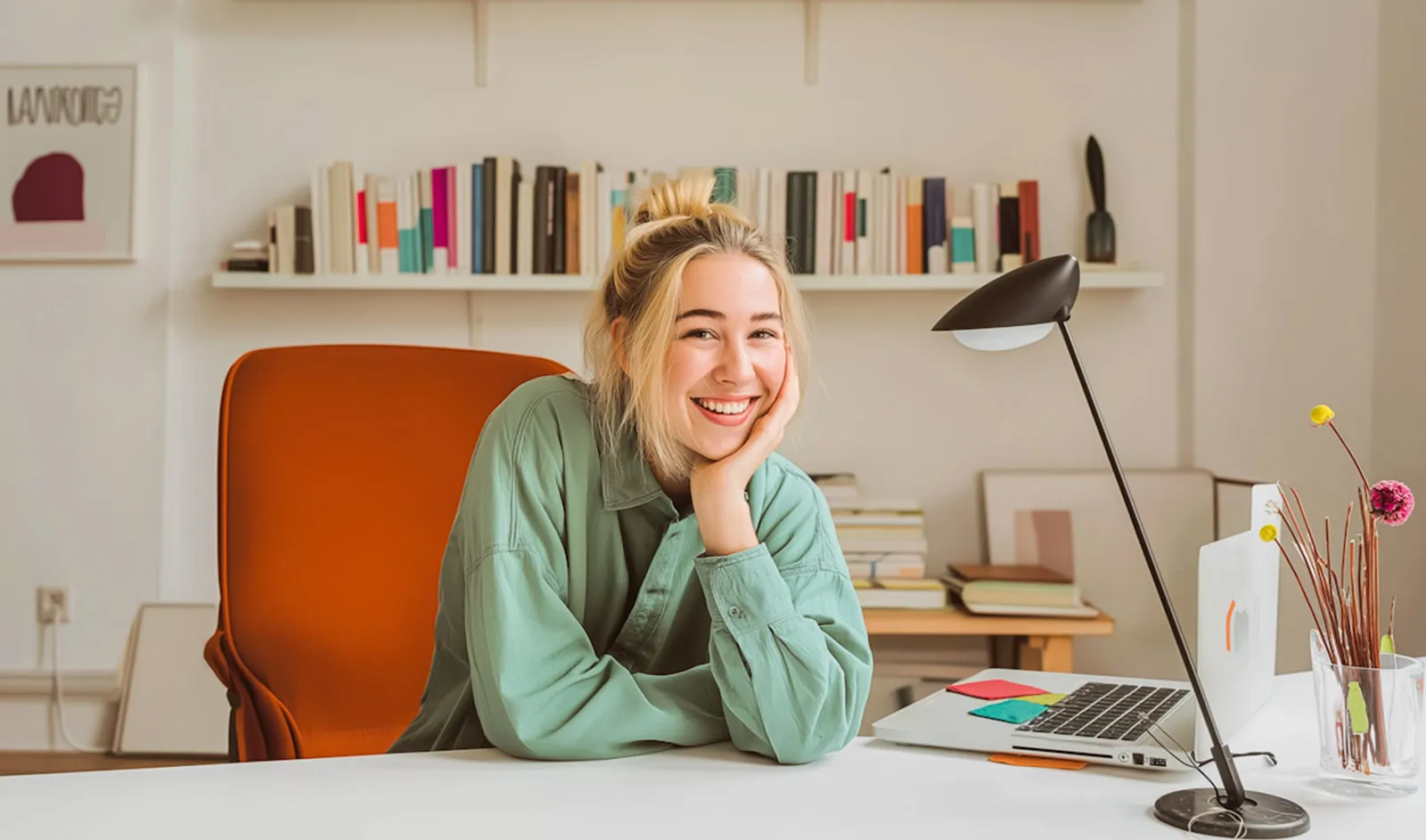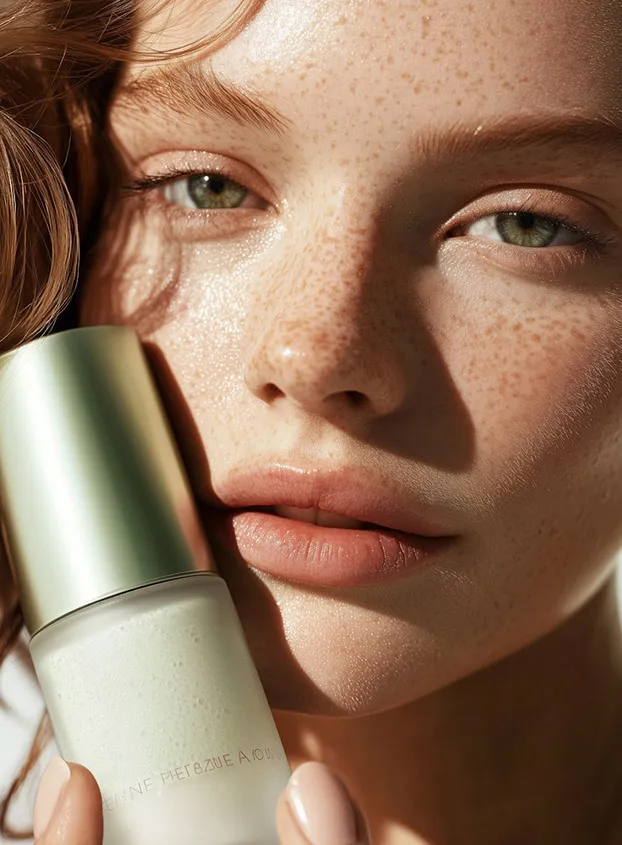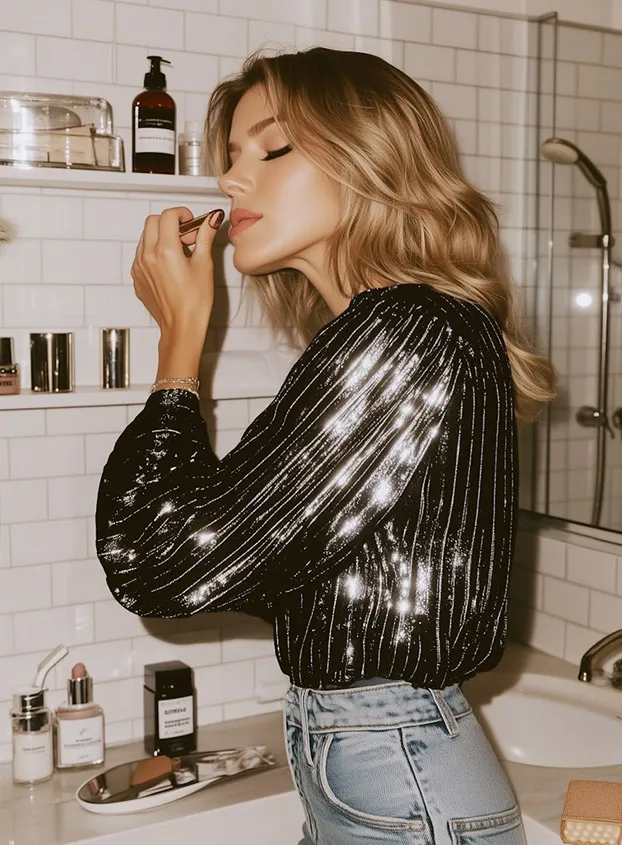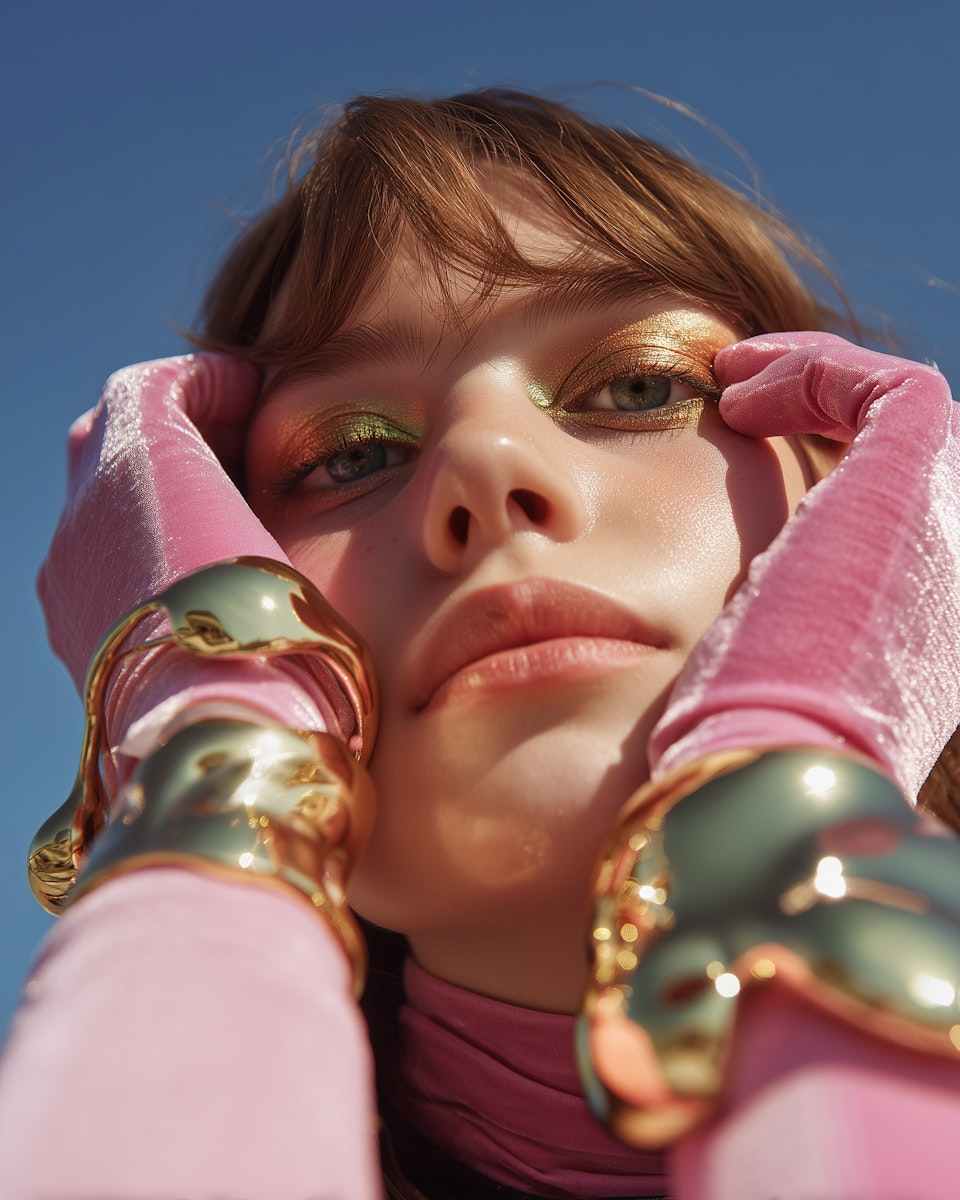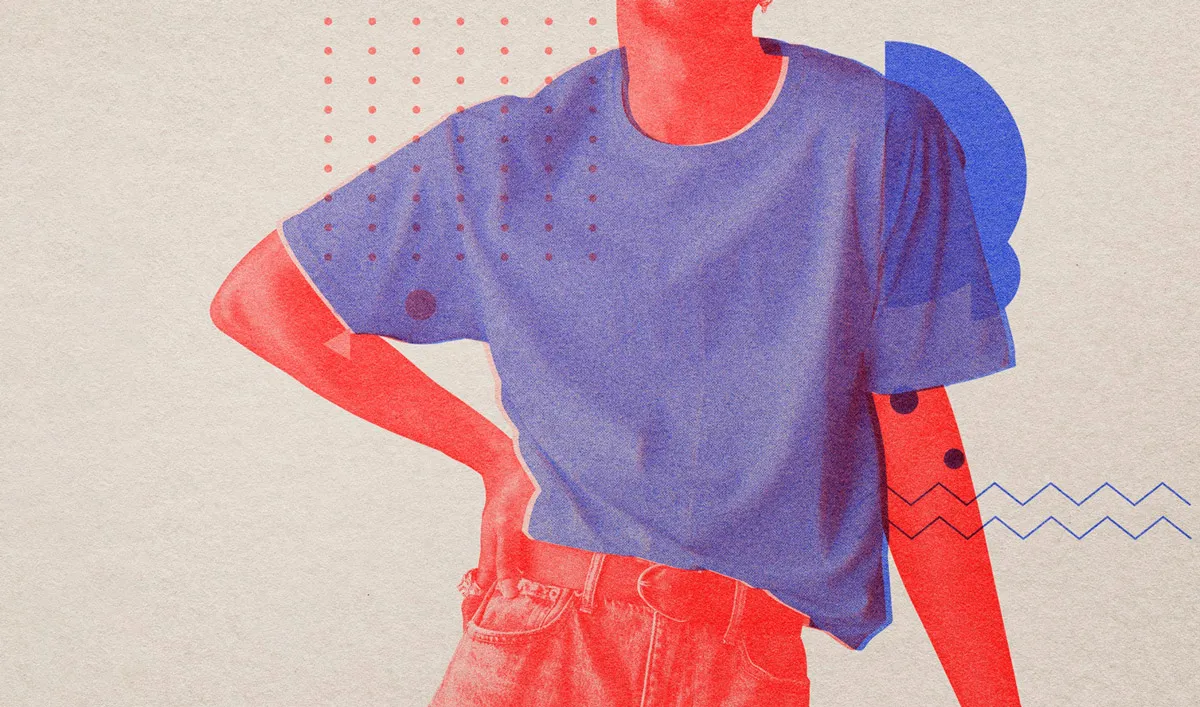
Introduction
Design plays a critical role in the cosmetics and beauty industry. In a crowded market, a well-designed product can be the difference between success and failure. Consumers are drawn to products that not only work well but also look and feel luxurious. As a graphic designer in this industry, you have the opportunity to create designs that not only communicate the value of your products but also elevate your brand's image.
In this article, we'll explore 10 design trends that will help you create designs that stand out in the cosmetics and beauty industry. From minimalist design to bold colors and typography, we'll cover a range of design trends that might help you create a cohesive brand identity that resonates with your target audience.
So whether you're looking to refresh your current design strategy or are starting from scratch, this article will help you with the inspiration and guidance you need to create designs that elevate your cosmetic brand's image. Let's dive in!

Design Trend #1: Minimalism
Explanation of minimalism as a design trend in the cosmetics industry:
A minimalist approach to design elements like color, typography, and imagery is used in minimalism, a style that emphasizes simplicity. Minimalist design can be a powerful tool for promoting the purity and simplicity of your products in the cosmetics sector.
Examples of minimalistic designs in the cosmetics industry:
One example of a cosmetic brand that uses minimalistic design effectively is Aesop. Aesop's brand identity is characterized by a minimalist aesthetic that is both elegant and sophisticated. The brand uses a limited color palette and simple typography to create a clean and uncluttered visual identity.
Another example is Glossier, whose branding also uses minimalist design. Younger consumers are drawn to Glossier because of its use of a pastel color scheme and straightforward, sans-serif typography.
Tips for incorporating minimalism into cosmetic design:
To incorporate minimalism into your cosmetic brand's design strategy, here are a few tips to keep in mind:
1. Use a limited color palette: Minimalism often involves using a limited color palette, such as black and white or a few complementary colors. This can help a designer to create a clean and uncluttered design.
2. Emphasize negative space: Negative space, or the space around design elements, is an important part of minimalist design. By emphasizing negative space, you can create a sense of balance and simplicity in your design.
3. Use simple typography: When it comes to typography, minimalism often involves using simple, clean fonts. Sans-serif fonts can be particularly effective in creating a modern and minimalist look. By incorporating these tips, you can create a minimalist design that effectively communicates the simplicity and purity of your cosmetic brand.

Design Trend #2: Bold Typography
Justification for the use of bold typography in cosmetics graphic design:
Using typography in a way that commands attention and conveys a brand's personality is known as bold typography. Bold typography can be a powerful tool for building a strong brand identity and leaving a lasting impression on customers in the cosmetics industry.
Examples of bold typography designs in the cosmetics industry:
One example of a cosmetic brand that uses bold typography effectively is Fenty Beauty. The bold, sans-serif typography that makes up Fenty Beauty's brand identity conveys the brand's edgy and contemporary personality. The brand conveys a powerful, assured message by using all caps and thick strokes.
Another illustration is Milk Makeup, which uses strong typography throughout its branding. A variety of typographic designs, such as bold sans-serif and fun script fonts, are utilized by Milk Makeup to establish a youthful and vibrant brand identity.
Tips for incorporating bold typography into cosmetic design:
Here are some ideas to keep in mind if you want to use bold typography in your cosmetic brand's design strategy:
1. Pick the right font: The effectiveness of your bold typography will be greatly influenced by the font you select. Choose a font that is strong and highly readable, even at small sizes.
2. Combine with opposing elements: To produce a strong and dynamic design, bold typography can be combined with opposing design elements like soft color schemes or simple imagery.
3. Use sparingly: It's important to avoid overusing bold typography, even though it can be effective. To have a significant impact where it matters, use bold typography sparingly.
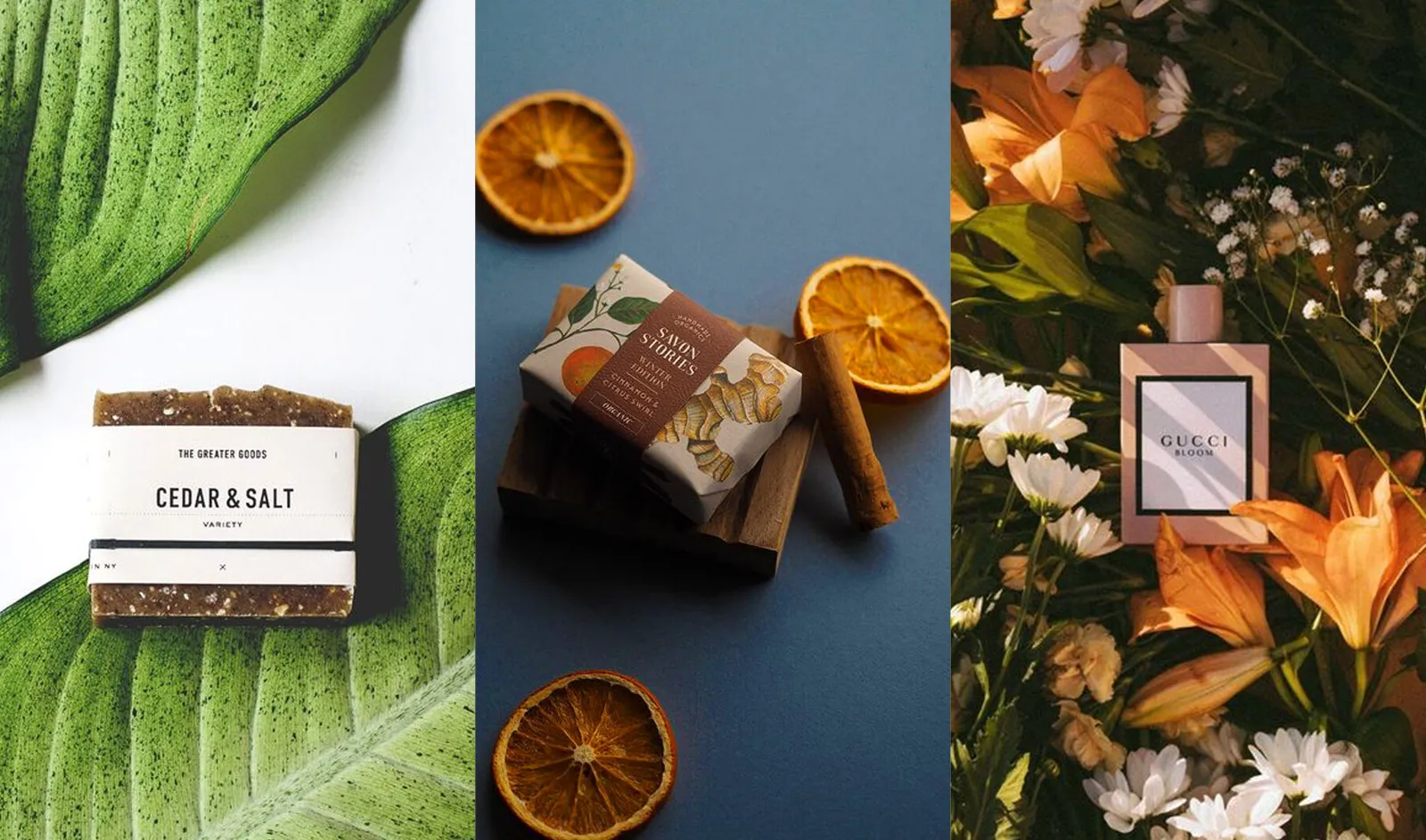
Design Trend #3: Natural Elements
Explanation of natural elements as a graphic design trend in the cosmetics industry:
A design trend widely recognized as "natural elements" involves to use organic, nature-inspired shapes, textures, and colors. In the cosmetics industry, natural elements can be an effective way to create a sense of authenticity, transparency, and sustainability that resonates with consumers.
Examples of natural element designs in the cosmetics industry:
One example of a cosmetic brand that uses natural elements effectively is Herbivore Botanicals. Herbivore Botanicals' packaging design features minimalist, nature-inspired illustrations that communicate the brand's focus on natural and organic ingredients.
Another example is Tata Harper, which incorporates natural elements into its branding through the use of earthy colors and botanical illustrations that communicate the brand's commitment to sustainability and transparency.
Tips for incorporating natural elements into cosmetics graphic design:
If you are considering to use natural elements into your design strategy, here is few tips to keep in mind:
1. Use earthy colors: Earthy colors, such as greens, browns, and blues, can be an effective way to communicate the natural elements of your product.
2. Incorporate botanical illustrations: Botanical illustrations can be a great way to incorporate natural elements into your design while also communicating the ingredients in your product.
3. Use natural textures: Textures such as wood grain, stone, or natural fibers can be used in packaging design or marketing materials to evoke a natural and organic feel.
By incorporating these tips, you can create a design that effectively communicates your cosmetic brand's focus on natural and organic ingredients, while also creating a sense of authenticity and transparency that resonates with consumers.
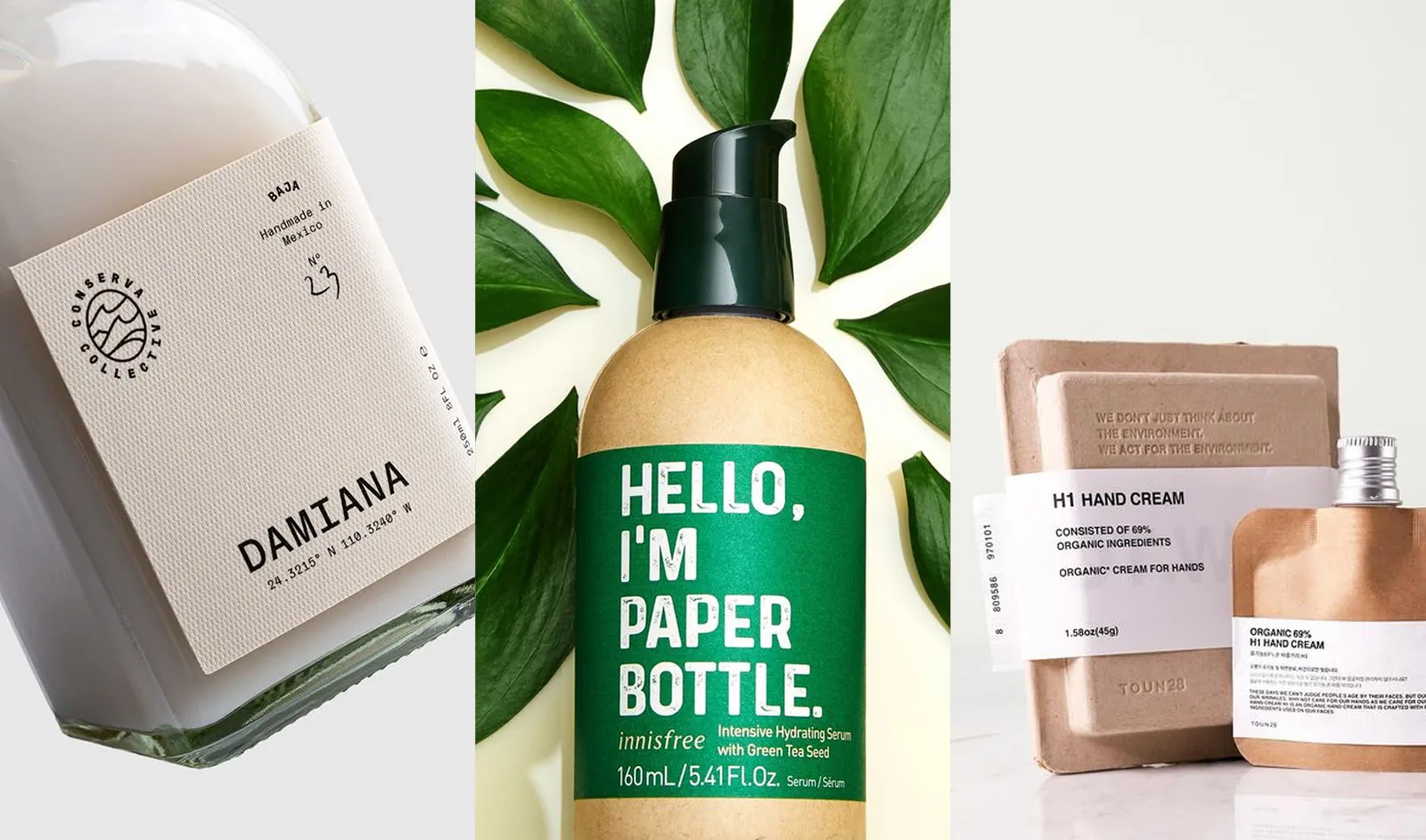
Design Trend #4: Sustainability
Explanation of sustainability as a design trend in the cosmetics industry:
Utilizing environmentally friendly materials, cutting waste, and lessening a product's negative impact on the environment are all part of the sustainability design trend. Due to growing consumer demand for brands that prioritize sustainability and increased environmental awareness among consumers, sustainability has taken on significant importance in branding and design within the cosmetics sector.
Examples of sustainable designs in the cosmetics industry:
As an example of a cosmetic brand that uses sustainable design effectively is Lush. Lush uses eco-friendly materials, such as recycled paper and biodegradable packaging, and focuses on reducing waste through package-free products and packaging that can be reused or recycled.
Another example is Axiology, which uses sustainable packaging made from recycled materials and biodegradable glitter made from plant cellulose.
Tips for incorporating sustainability into cosmetics graphic design:
Here are some ideas to keep in mind if you want to incorporate sustainability into the design strategy for your cosmetic line:
Consider using recyclable, biodegradable, or sustainable materials, like bamboo or glass, to reduce your impact on the environment.
Putting waste reduction first Consider using refillable containers or creating packaging that can be reused or repurposed to reduce waste in your product packaging and design. Promote your sustainability initiatives: Make sure your design and branding make your brand's sustainability efforts clear, for example by using eco-friendly logos or packaging messaging.
By using these suggestions, you can produce a design that clearly conveys your cosmetic brand's dedication to sustainability while also appealing to customers who give these factors top priority when making purchases.
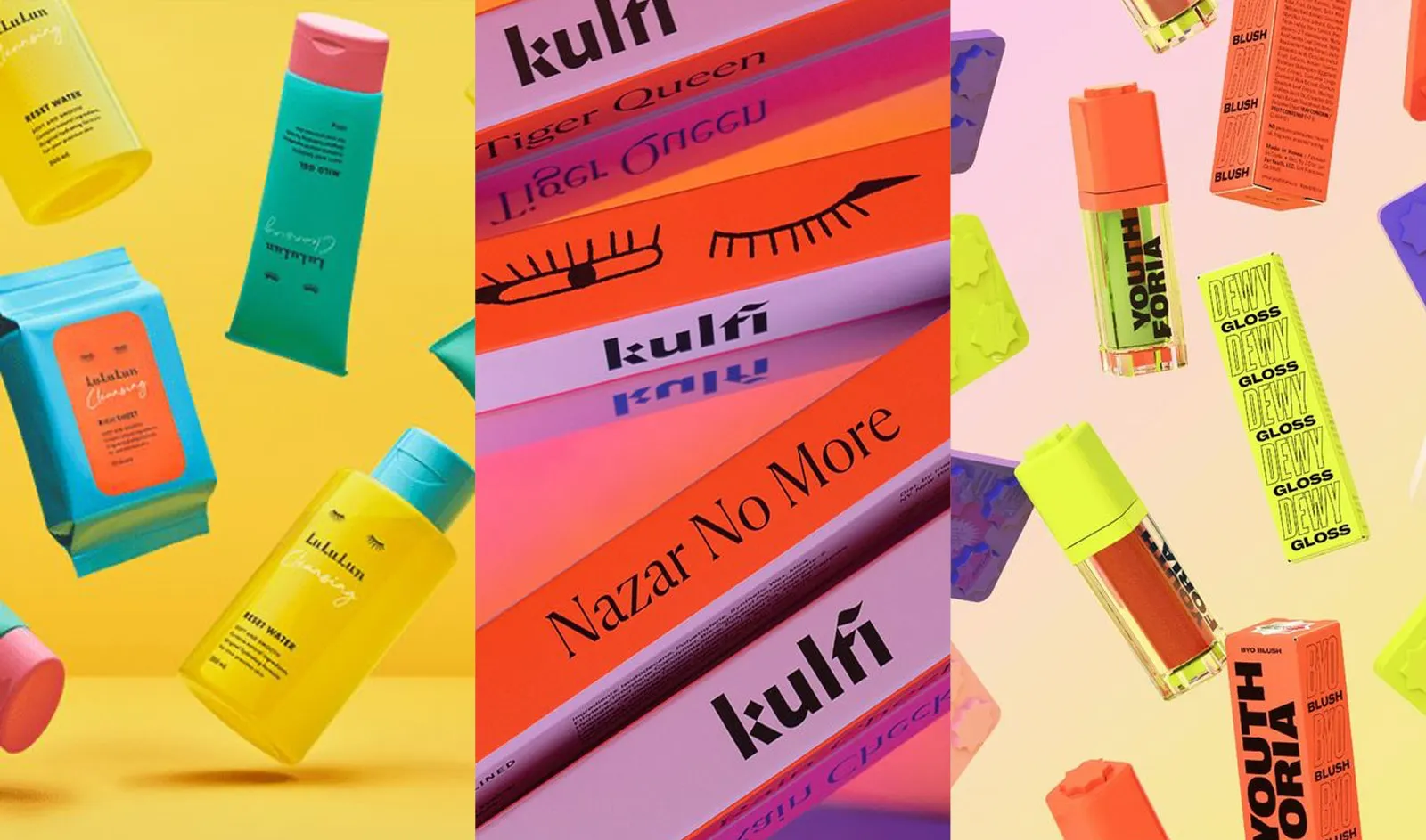
Design Trend #5: Vibrant Colors
Explanation of vibrant colors as a graphic design trend in the cosmetics industry:
Vibrant colors are a design trend that involves using bold and eye-catching hues to grab attention and create a sense of excitement or energy. In the cosmetics industry, vibrant colors are often used to evoke emotions and create a memorable brand image.
Examples of vibrant color designs in the cosmetics market:
Fenty Beauty is one example of a cosmetic company that makes good use of vibrant colors. Electric blue and bright pink are among the bold, exuberant color choices made by Fenty Beauty, which energize and excite consumers about the company.
Another example can be Jeffree Star Cosmetics, which engages vivid, strong colors across its branding and packaging to create a memorable, attention-grabbing image.
Tips for incorporating vibrant colors into cosmetic design:
Here are some ideas to keep in mind if you want to use vibrant colors in the design of your cosmetic line:
Think about who you want to reach: Make sure the colors you choose are appropriate for your target audience and the emotions you want to evoke. Put color psychology to use: Make color selections based on color psychology to evoke a certain mood or emotion.
Don't afraid to mix and match: Experiment with different color combinations to find a unique and memorable look for your brand.
By incorporating these tips, you can create some vibrant and memorable design that effectively communicates your cosmetic brand's energy and excitement, while also appealing to your target audience.

Design Trend #6: Retro Design
Explanation of retro design as a design trend in the cosmetics industry:
Retro design refers to a style that draws inspiration from past eras, typically from the 1920s to the 1980s. Retro design has grown in popularity in recent years in the cosmetics industry as a way to evoke nostalgia and an authentic feeling.
Examples of retro designs in the cosmetics industry:
As an example of a cosmetic brand that uses retro design effectively is Bésame Cosmetics, which draws an inspiration from vintage makeup products and packaging from the 1920s to the 1960s. The brand uses bold, colorful designs and vintage typography for creating a distinctive look and feel.
Another example is Lime Crime, which uses bright, bold colors and retro-inspired packaging to create a unique and memorable brand image.
Tips for incorporating retro design into cosmetic design:
If you're looking to utilise retro design into your cosmetic brand's design strategy, here are few tips to keep in mind:
1. Research your era: Take your time to research the specific era you want to draw inspiration from, and pay attention to the key design elements and aesthetics of that time period.
2. Use vintage typography: Choose typography that is reminiscent of the era you're drawing inspiration from, such as Art Deco-inspired fonts for a 1920s look.
3. Experiment with color: Use bold, bright colors that were popular in the era you're drawing inspiration from to create a memorable and eye-catching design.
By incorporating these tips, you will be able to create a retro-inspired design that effectively communicates your cosmetic brand's sense of nostalgia and authenticity, while also appealing modern audiences.

Design Trend #7: Custom Illustrations
Explanation of custom illustrations as a design trend in the cosmetics industry:
Custom illustrations are a popular design trend in the cosmetics and beauty industries that involve creating unique, hand-drawn artwork for packaging, advertising, and other branding materials. These illustrations can contribute to create a distinctive brand identity and evoke a sense of personality and authenticity.
Examples of custom illustration designs in the cosmetics industry:
One example of a cosmetic brand that uses custom illustrations effectively is Glossier, which incorporates playful and whimsical illustrations on its packaging, website, and social media channels.
Another example is Lush, which uses colorful and intricate illustrations on its product packaging to create a sense of freshness and natural ingredients.
Tips for incorporating custom illustrations into cosmetic design:
If you're looking to incorporate custom illustrations into your cosmetic brand's design strategy, here are a few tips to keep in mind:
1. Find the right style: Choose a style of illustration that aligns with your brand's values and personality. For example, if you want to convey a sense of playfulness, you might choose a whimsical, hand-drawn style.
2. Consider the context: Think about where your illustrations will appear and how they will be used. For example, you might want to create a series of illustrations for your social media channels, or create custom artwork for your product packaging.
3. Work with a professional: Hiring a professional illustrator can help ensure that your custom illustrations are high-quality and effectively communicate your brand's message.
By incorporating these tips, you can create custom illustrations that help elevate your cosmetic brand's image and create a memorable and engaging brand identity.
In today's competitive beauty industry, effective packaging design is more important than ever. By following the key elements and tips discussed in this post, brands can create packaging designs that are both aesthetically pleasing and strategically effective.

Design Trend #8: Personalization
As customers demand distinctive and personalized experiences, personalization has grown in popularity as a design trend in the cosmetics industry. By incorporating personalization into cosmetic design, businesses can develop a closer, more personalized bond with their customers, which boosts client satisfaction and brand loyalty.
Custom packaging is one way to include personalization in cosmetic design. For instance, a business might let customers customize the color or pattern of the product packaging, as well as add their name or initials or even a personalized message.
Another way to personalize cosmetic design is through customized products. For example, a brand could offer different shades or formulations based on a customer's skin tone or type, or create personalised fragrances based on a customer's scent preferences.
Furthermore, companies can incorporate personalization into their marketing and advertising efforts. This can include personalized emails or promotional materials that address the customer by name and offer personalized product recommendations based on their past purchases or browsing history.
For instance, the beauty brand Sephora offers a Personalized Skincare Diagnostic tool that asks customers a series of questions about their skin type and concerns and recommends personalised skincare products based on their answers. Another example is the cosmetics company MAC, which offers a custom palette feature that allows customers to choose and customise their own makeup palette.
Overall, personalization is a design trend that offers companies the opportunity to create a unique and tailored experience for their customers. By incorporating personalization into cosmetic design, brands can build stronger connections with their customers, resulting in increased customer loyalty and repeat purchases.

Design Trend #9: Metallic Elements
Metallic elements are a versatile and eye-catching design trend that has become increasingly popular in the cosmetics industry. From shiny silver and gold to rose gold and copper, metallic elements can add an air of luxury and sophistication to cosmetic packaging and marketing materials.
Using metallic foil accents on product packaging or labels is one instance of incorporating metallic elements into cosmetic design. This can give the area a high-end, glamorous appearance that attracts clients. Utilizing metallic colors in graphic design, such as shades of silver or gold, to make a strong and striking visual impact is another way to incorporate metallic elements.
When using metallic elements, it's important to balance the design with other elements to avoid overwhelming the consumer. Too much metallic can be distracting and take away from the product itself. Instead, metallic elements should be used strategically to enhance the overall design and complement the product.
Additionally, consider the brand image and target audience when incorporating metallic elements. For a younger, more playful demographic, consider using metallic elements in a more subtle way, such as with metallic lettering or accents. For a more sophisticated and upscale audience, consider using metallic elements in a more prominent way to convey luxury and elegance.
Overall, metallic elements can be a great way to add a touch of luxury and sophistication to cosmetic design. When used strategically and balanced with other design elements, metallic elements can create a memorable and visually stunning cosmetic product that stands out in a crowded market.
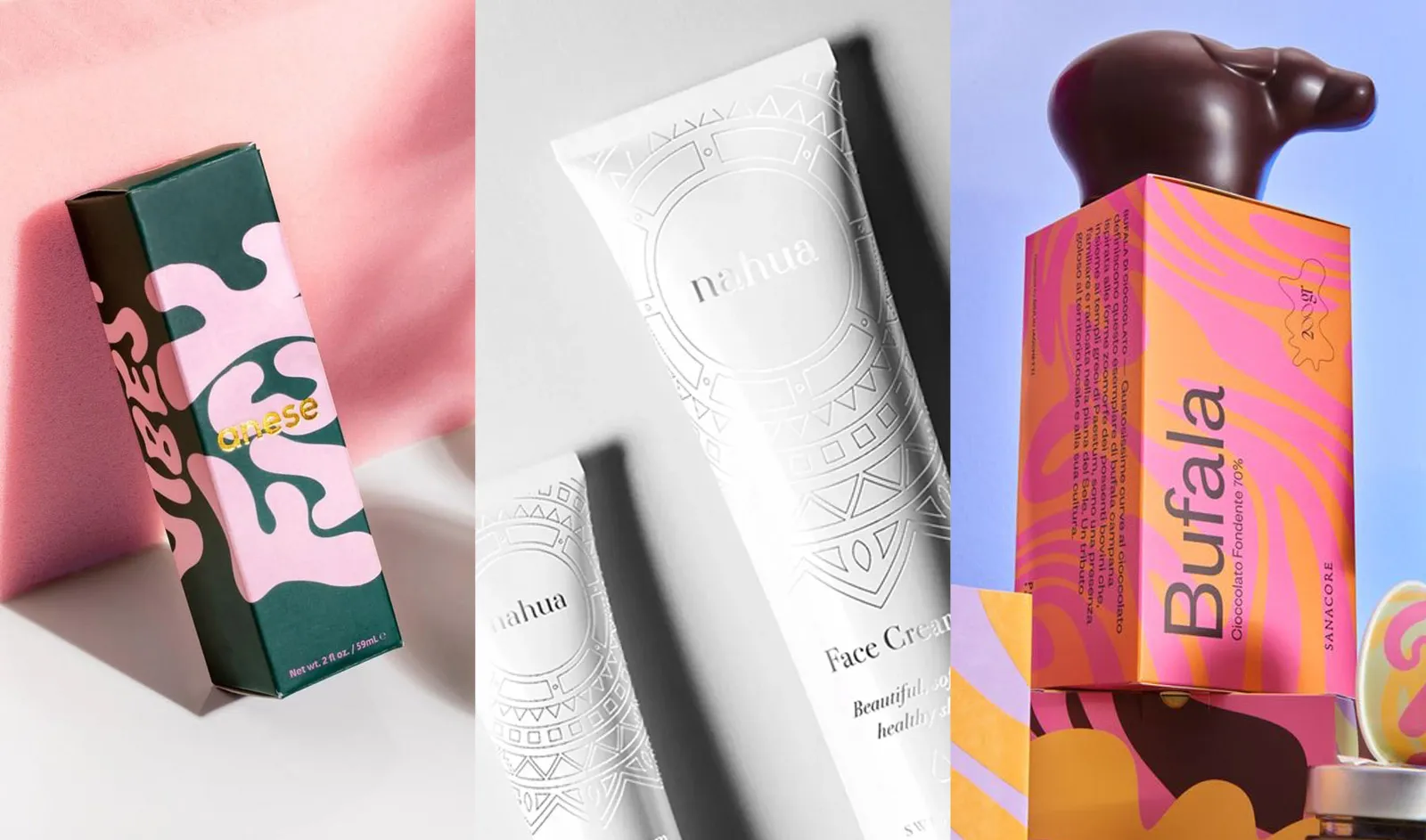
Design Trend #10: Geometric Shapes
Explanation of geometric shapes as a graphic design trend in the cosmetics industry
Geometric shapes have been a design trend in the cosmetics industry for a few years now, and they are continue to gain popularity. Because they are simple and adaptable, these shapes are ideal for producing crisp, contemporary designs. Potential customers can be drawn to cosmetic products by using geometric shapes to make them stand out on store shelves and in online marketplaces.
Examples of geometric shape designs in the cosmetics industry
Many companies, including Milk Makeup and Glossier, have used geometric shapes in their packaging and advertising. While Milk Makeup's Lip + Cheek Sticks come in stylish, triangular tubes, Glossier's "Play" collection features products with packaging designed with circular and oval shapes. These shapes distinguish the brand from rivals by giving it a distinctive and enduring aesthetic.
Tips for incorporating geometric shapes into cosmetics graphic design
When incorporating geometric shapes into cosmetic design, it's important to consider the overall brand image and messaging. Geometric shapes can convey a sense of minimalism and modernity, but they can also create a playful or futuristic look, depending on how they are used. Consider using geometric shapes as accents or patterns on packaging, or even incorporating them into the logo design. Just be sure to keep the design cohesive and not too cluttered with too many shapes.
Conclusion
In conclusion, we have explored the top 10 design trends that can elevate your cosmetic brand's image in today's competitive industry. These trends include minimalism, bold typography, natural elements, sustainability, vibrant colors, retro design, custom illustrations, personalization, metallic elements, and geometric shapes.
Staying up-to-date with these trends and incorporating them into your brand's visual identity can give your business a competitive edge and attract more customers. As a designer, it is important to keep exploring new design ideas and techniques to stay ahead of the game.
If you are looking to revamp your cosmetic brand's image and incorporate these design trends, do not hesitate to contact me for design services. I will be happy to help you create a unique and captivating visual identity that aligns with your brand's values and vision. Let's work together to take your cosmetic brand to the next level.

